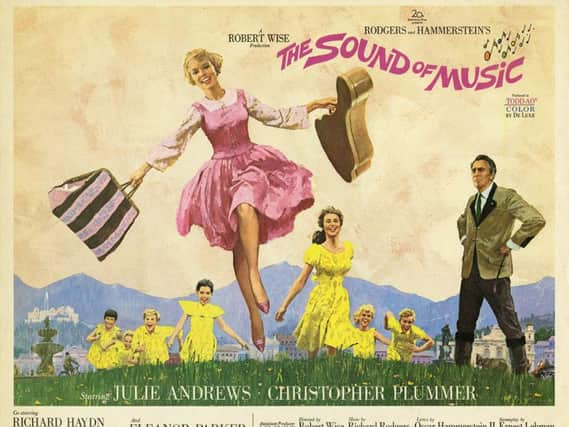Torpedo inventor's link with the von Trapp family


Quite a few of the Lampson kith and kin are buried in the grounds of St. Nicholas Church in the village of Worth, north of Balcombe.While researching the Lampson family history, I came across the name of Robert Whitehead, a gentleman who also happens to be interred in Worth churchyard. Whitehead was a Victorian engineering entrepreneur who became very successful and wealthy. In 1881 he acquired the large Sussex estate of Paddockhurst near Worth where he had an impressive house constructed. The house is still there though now it is the central part of a school.Robert Whitehead’s claim to fame is that he invented the world’s first reliable torpedo. So robust was his creation that it came close to causing the defeat of Great Britain in two world wars at the hands of Germany’s deadly U-Boats. Also - astonishingly - it was a Whitehead Mark VIII torpedo that was key to the British victory in the Falklands War of 1982. Fired from the submarine “HMS Conqueror”, the torpedo sank the Argentinian cruiser, “Admiral Belgrano”, an act that led to great loss of life but left the Argentine navy bottled up in their mainland ports and no further threat to the British Task Force.Robert Whitehead was born in Bolton in 1823. After grammar school he became an apprentice engineer. Once qualified, he went to work in Europe, ending up in Milan where he devised machinery for producing textiles. Next he moved to Trieste in the Adriatic and joined a company that built marine steam engines. At the time Trieste was part of the Austro-Hungarian Empire that allowed land-locked Austria access to the sea.A retired Austrian Navy captain, Giovanni Luppis, had hit on the idea of constructing a floating metal tube that when filled with explosives could be launched from the shore and aimed at a ship. It was really more of a mine as it lacked true propulsive power. Whitehead took this idea and worked on it. In 1866 he completed his prototype torpedo. Launched from a surface vessel and powered by compressed air, the subsequent production models could run submerged at around seven knots for almost half a mile. He later said that his twelve-year-old son, John, had helped perfect the design. In 1868 the Austrian Navy placed the first order for torpedoes. Whitehead shrewdly held on to all of his copyrights and patents thus ensuring he would soon become fabulously rich as other nations rushed to acquire their own supply of the new weapons.With the Whiteheads prospering abroad they drew the attention of other wealthy families. In 1869 Robert’s daughter Alice married Count Georg Hoyos, an aristocrat with links to the Hapsburg family. He too was also very well off and invested in the Whitehead torpedo business. Before this an 18-inch torpedo had been successfully demonstrated to the Royal Navy. Though eager to buy, the Admiralty insisted that their devices must be manufactured in Britain. Whitehead selected Portland Harbour as the site for his factory. Admiral of the Fleet William May later observed: “But for Whitehead’s torpedoes, the submarine would have remained an interesting toy, and little more.”Robert died in November 1905. At his funeral in St. Nicholas Church, a torpedo made from white flowers adorned his coffin. Whitehead somewhat naively maintained that his torpedoes were deterrents to enemies rather than weapons of offense - a bit like the nuclear bomb is today. To be fair to him, Whitehead was a devout Christian and teetotal. He once gave £1,000 to temperance movement activist Agnes Weston to help her buy and subsequently demolish two pubs in Devonport. He left his fortune to his granddaughter Agatha, her father John having died suddenly in 1902. One day Agatha was asked to “christen” an Austrian submarine. She met the submarine’s commander, Captain Georg von Trapp, and the pair fell in love. They married in 1912 and had seven children. In World War I, von Trapp was lauded as an Austrian naval hero. His submarine’s torpedoes sank eleven Allied ships, six of them British. The end of the war saw the collapse of the Austro-Hungarian Empire and Austria lost her access to the Adriatic. With his navy defunct, von Trapp’s maritime career was ended. Because his birth town of Zara was ceded to Italy he was able to claim Italian citizenship alongside his Austrian identity.After Agatha’s death from scarlet fever in 1922, the widower married again in 1927 when aged 47. His 22-year-old bride was postulant nun Maria Kutschera and the new ensemble went on to achieve fame as the von Trapp Family Singers. The musical “The Sound of Music” is the semi-fictional story of their flight from Nazi-controlled Austria. Another granddaughter of Robert Whitehead, Marguerite Hoyos, married Herbert von Bismarck, son of the German “Iron Chancellor”. It is a peculiar coincidence that Adolf Hitler was to name the greatest battleship in the resurgent German navy after the statesman Bismarck. Peculiar because in May 1941 the “Bismarck” met its nemesis when a Whitehead torpedo from a Fairey Swordfish bi-plane flying off the aircraft carrier “Ark Royal” knocked out the ship’s steering system. The crippled “Bismarck” was subsequently sunk by Royal Navy gunfire.